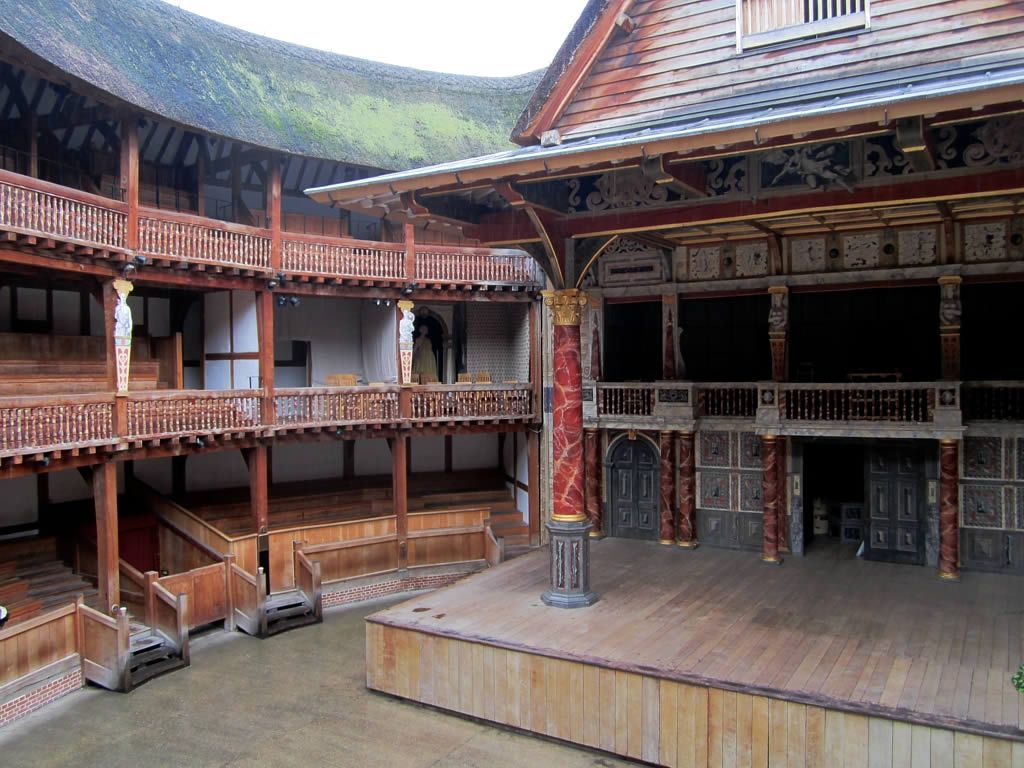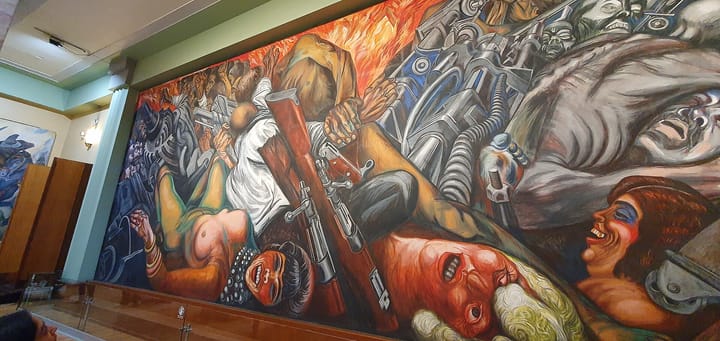Shakespeare's wooden universe: London's old Globe Theatre.
The theater world of late 16th century London was an amazing panoply of egos, creativity, architecture and politics.

Four hundred and ten years ago today, on June 29, 1613, a fire broke out at the Globe Theatre, on Maiden Lane in Southwark, London. The fire occurred during a performance of one of William Shakespeare's lesser-known plays, Henry VIII. A stage cannon ignited some of the thatch near the stage and the building, constructed of wood and thin stucco, went up like a Roman candle. The audience was evacuated in a more or less orderly fashion, but one man ran screaming with the seat of his pants on fire. Legend has it the fire was put out when people poured ale on him, and he wasn't seriously hurt.
The 1613 fire was not the end of the Globe; it was rebuilt and reopened the next year, and in fact survived one of its shareholders, Shakespeare himself, who died in 1616. The Globe, as well as all the theaters of London, were at the epicenter of a long debate in Elizabethan-era society about the morality of public entertainment. In 1644 those who disfavored it won out. England, seized by Puritan fervor and racked by civil war, was becoming more conservative. The Globe was closed in that year and torn down to make room for tenements. The wooden universe of Shakepeare and many other playwrights of the English Renaissance was no more.
The earlier history of the Globe is quite fascinating. The theater was financed by Richard Burbage, one of the great actors of the day, and his brother. Shakespeare and several others were minor shareholders. The materials from which the Globe was built were actually part of a different theater owned by the Burbage family and built in 1576. In 1599, a dispute between Burbage and the owner of the land on which that earlier theater was built necessitated removing it. While the landlord was out of town Burbage had a team of men literally take apart the theater and remove its beams and lumber to another site on Maiden Lane. The resurrected theater, now called the Globe, was open for business in the summer of 1599. The first show was probably the inaugural performance of Shakespeare's Henry V, though some historians dispute this.

Although the Globe was active for barely more than 45 years--most of them after Shakespeare's death--the theater has come to be closely associated with the great Bard. Not just his plays were shown there, but many by England's classic playwrights of the late 16th and early 17th century such as Ben Jonson. Still, the Globe is more of a concept to us than a historical reality. No accurate plans of the building survived, so we don't even know exactly how big it was or what its layout was like. Yet the ambiance of Shakespeare-era London theaters is well known to us today, depicted in countless modern productions of Shakespeare as well as movies like John Madden's Shakespeare in Love--which ironically does not depict the Globe (the film takes place in 1593, before the theater was built), but another theater called the Rose, which is obviously intended to look like most of us think an original Shakespeare theater should look.
In 1997 a replica of the Globe--as near as anyone can guess--was built in Southwark near, but not exactly on, the site where the original theater stood. "Shakespeare's Globe," as it is called, was financed by a foundation started by American actor Sam Wanamaker. This reconstructed theater is more about the mythology and the cultural gestalt of the Elizabethan theater than it is about the real Globe itself, but it's still an interesting and worthwhile tourist attraction if you ever happen to be in London.
Little remains of the London of Shakespeare's time. It's hard for us to imagine just what it was like 400 years ago, and our impressions of its past, filtered through modern popular culture, are facsimiles more than reality. But the Globe did exist, and it was a vibrant part of the city's life in an iconic period of its existence. The cultural heritage of the English-speaking world is deeply tied up in England's Elizabethan past, which lives as much today in the verse of Shakespeare as it does in what few buildings or artifacts from the era have managed to survive. The Globe and the flights of fancy it housed for its audience was a wooden-walled universe unto itself. It's tempting to try to put oneself back in that time, amidst those walls, and imagine what you might have seen and heard there four centuries ago.
The Value Proposition
Why should you be reading this blog, or receiving it as a newsletter? This is why.
☕ This is where I normally put my Ko-fi link. Don't buy me a coffee this week--order my new history book The 50 Most Important Things in History instead for the same price!
🎓 Like learning? Find out what courses I’m currently offering at my website.
📽 More the visual type? Here is my YouTube channel with tons of free history videos.



Comments ()